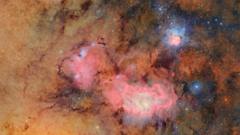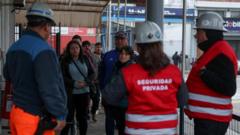The Rubin Observatory's state-of-the-art technology aims to locate elusive celestial bodies, such as potential ninth planets, and track transformative cosmic events. The telescope's 3,200-megapixel camera captures ultra-high-resolution images, enabling astronomers to witness the dynamics of space like never before.
Professor Catherine Heymans, Astronomer Royal for Scotland, underlines the significance of this venture, citing decades of effort to realize this project. As the observatory monitors cosmic changes over ten years, it promises to enhance our knowledge of dark matter and the formation of the Milky Way, while its monitoring capabilities could contribute to Earth's safety by identifying hazardous near-Earth objects.
As astronomers around the globe get ready to analyze the vast data streams generated by the telescope, the scientific community anticipates groundbreaking insights that could reshape our comprehension of the cosmos.
The release of these images signals the dawn of a new era in astronomical research, setting the stage for discoveries that could unfold over generations.
Professor Catherine Heymans, Astronomer Royal for Scotland, underlines the significance of this venture, citing decades of effort to realize this project. As the observatory monitors cosmic changes over ten years, it promises to enhance our knowledge of dark matter and the formation of the Milky Way, while its monitoring capabilities could contribute to Earth's safety by identifying hazardous near-Earth objects.
As astronomers around the globe get ready to analyze the vast data streams generated by the telescope, the scientific community anticipates groundbreaking insights that could reshape our comprehension of the cosmos.
The release of these images signals the dawn of a new era in astronomical research, setting the stage for discoveries that could unfold over generations.
















